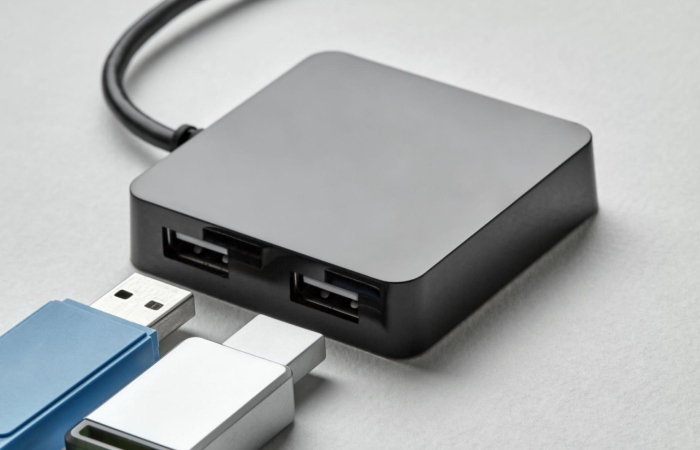The majority of modern peripheral devices that you may want to connect to your computer are equipped with a USB connector. Most of the computers have a limited number of USB port hubs that can be used simultaneously. This can become an issue if you have multiple devices that you want to connect to your machine at the same time.
You might want to use a Keyboard, scanner, printer, and external hard drive in order to get your work done. Perhaps you also would like to charge your phone while you are working. You can swap devices in and out of the limited number of USB port hubs on your computer, but this can become frustrating and unproductive. There has to be a better way to make use of your peripheral devices.
This problem is solved by employing a USB hub to provide additional USB ports to your system. A USB hub expands the capability of your machine, allowing it to interact with multiple USB devices simultaneously. It is a piece of equipment that provides numerous USB ports that all communicate with your computer through a single USB connector.
A USB hub will enable you to be more productive by eliminating the need to swap cables in order to access different peripheral devices. Regardless of the number of USB ports built into your machine. A USB hub will allow you to increase the number of devices that you can concurrently support.
Types of USB Hubs

There are a variety of different types of USB hubs that are manufacture to meet variable user demands. You can use an expansion card that adds a USB hub to a desktop computer. An open slot enables you to use a USB hub with older machines that may not be equipped with USB ports.
Stand-Alone Unit
The most common type of USB hub is a stand-alone unit that enlarges the capabilities of a computer with at least a single USB interface. These can be divide into those hubs that are bus-power and those that provide their own power.
Bus-Powered USB
Bus-powered USB hubs obtain their power through the connection to the host machine, which can be a computer or another USB hub. This variety of hub is more portable as there is no need to find a power source for the device. They are also generally less expensive than a self-powered hub.
There is a tradeoff involve if you choose to use a bus-powered USB hub. Your computer is now responsible for powering the hub as well as the attached devices if they do not provide their own power. Laptop batteries will drain more quickly with this type of USB hub configuration, and the host machine’s performance can be negatively affect.
Self-Powered USB Hub
Employing a self-powered USB hub eliminates these potential issues. You will spend more when purchasing this type of hub. And it will result in another cord on your desktop that needs to be plug into a power source. The main benefit of a self-powered hub is that it can be used to charge and power your peripheral USB devices with no impact to your computer.
USB hubs are available that support either the USB 2 or USB 3 protocol. The connectors and ports are identical, so either kind of hub can be use with your USB devices. In order to achieve the full speed and performance offered by USB 3 devices, you will need to use a USB 3 hub. All components, including cables, connections, and hubs, need to fully support USB 3 to reap the benefits afforded by the newer protocol.
Accessing your USB Port Hubs Remotely
After connecting all of your peripheral devices to a USB hub. You may decide that you would like to provide remote access to them. You might have connected an external storage device that contains information needed by a co-worker located in another office. It is not possible for everyone to be located in close physical proximity to the devices they need to access.
USB Network Gate is an application that enables remote access to USB-connected peripheral devices. You just need to install the software on the computer with the USB hub attached, as well as the machines that will be sharing the hub or its connected devices. This enables remote access to the peripherals as if they were locally connect to your computer. It is a simple and elegant solution to the problem of sharing USB devices remotely.
A USB hub improves the functionality of your computer. And a USB Network Gate allows a dramatic increase in the functionality of the peripheral devices attached to the hub. A single computer will have multiple USB devices connected, which are all accessible by remote users spread out across the globe.
Summing it all up
If you’re frustrate that your computer doesn’t have enough USB ports. You don’t have to toss it out and shovel out money on a completely new one. Although you can find high-quality HP computers on the HP Store that have ample ports. There’s no need to upgrade just for that reason. Instead, get a port hub for your computer. Many port hubs are compact enough for travel, and they’ll enable you to connect all your devices even if you’re on the go.


